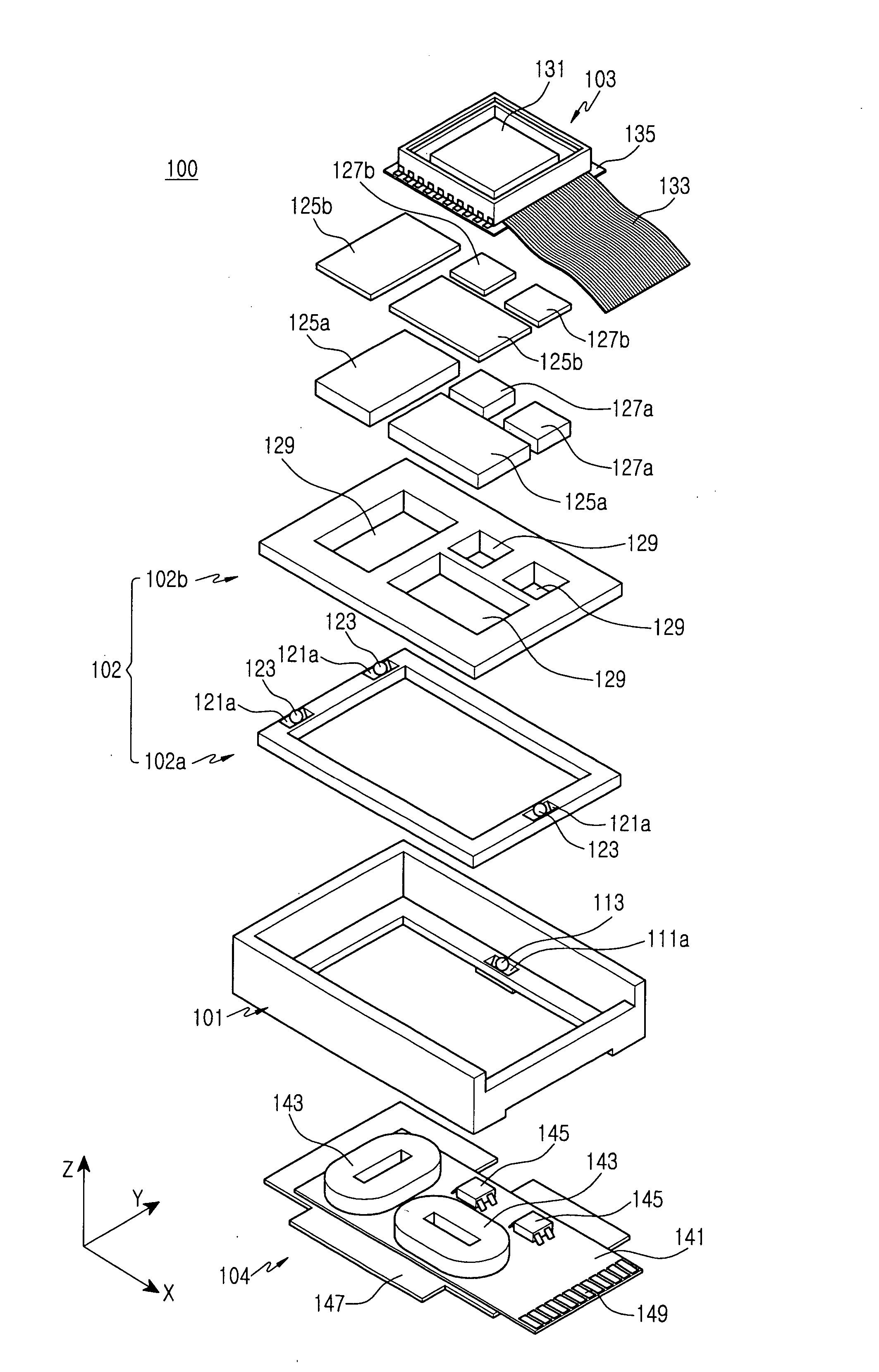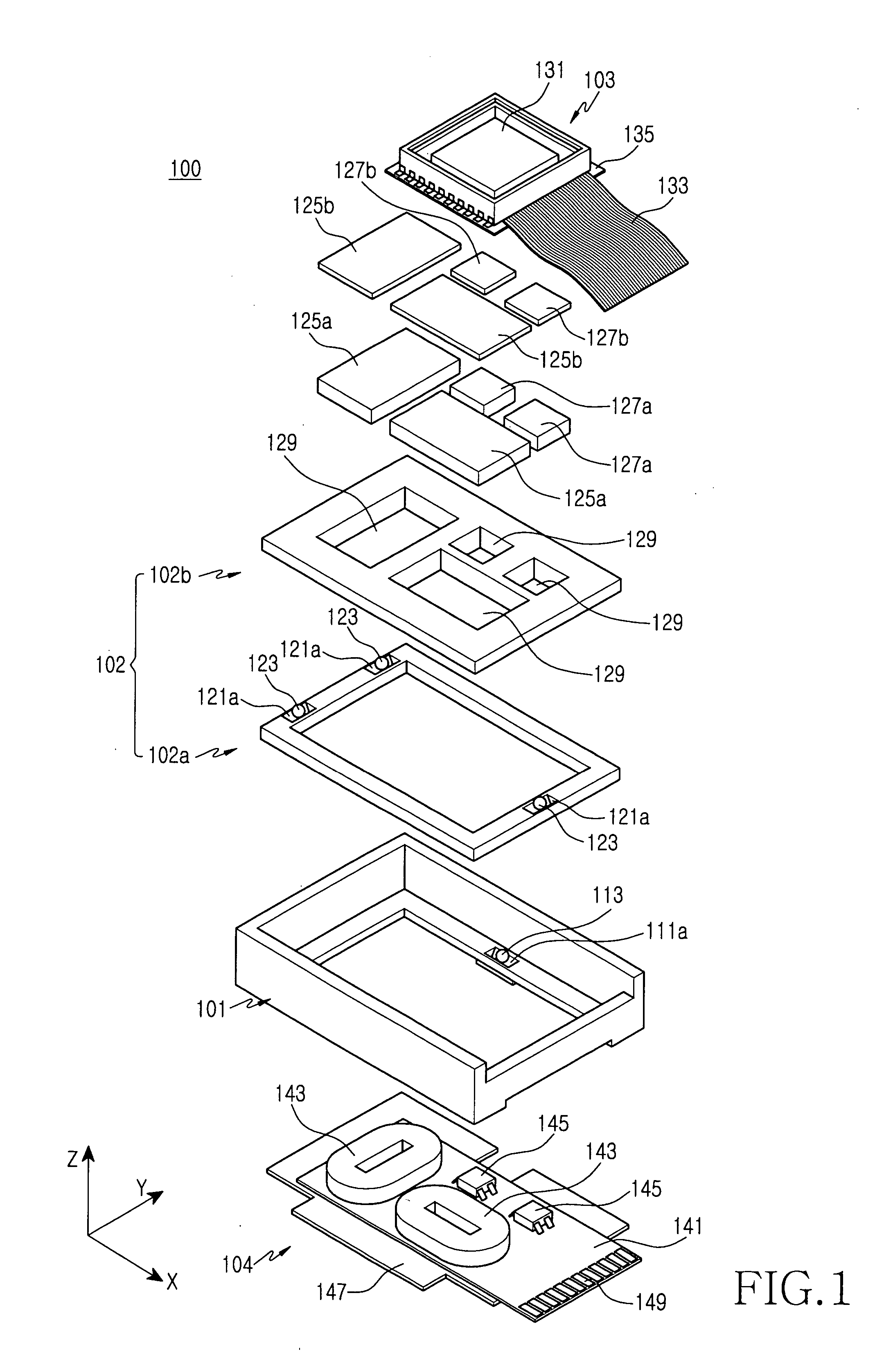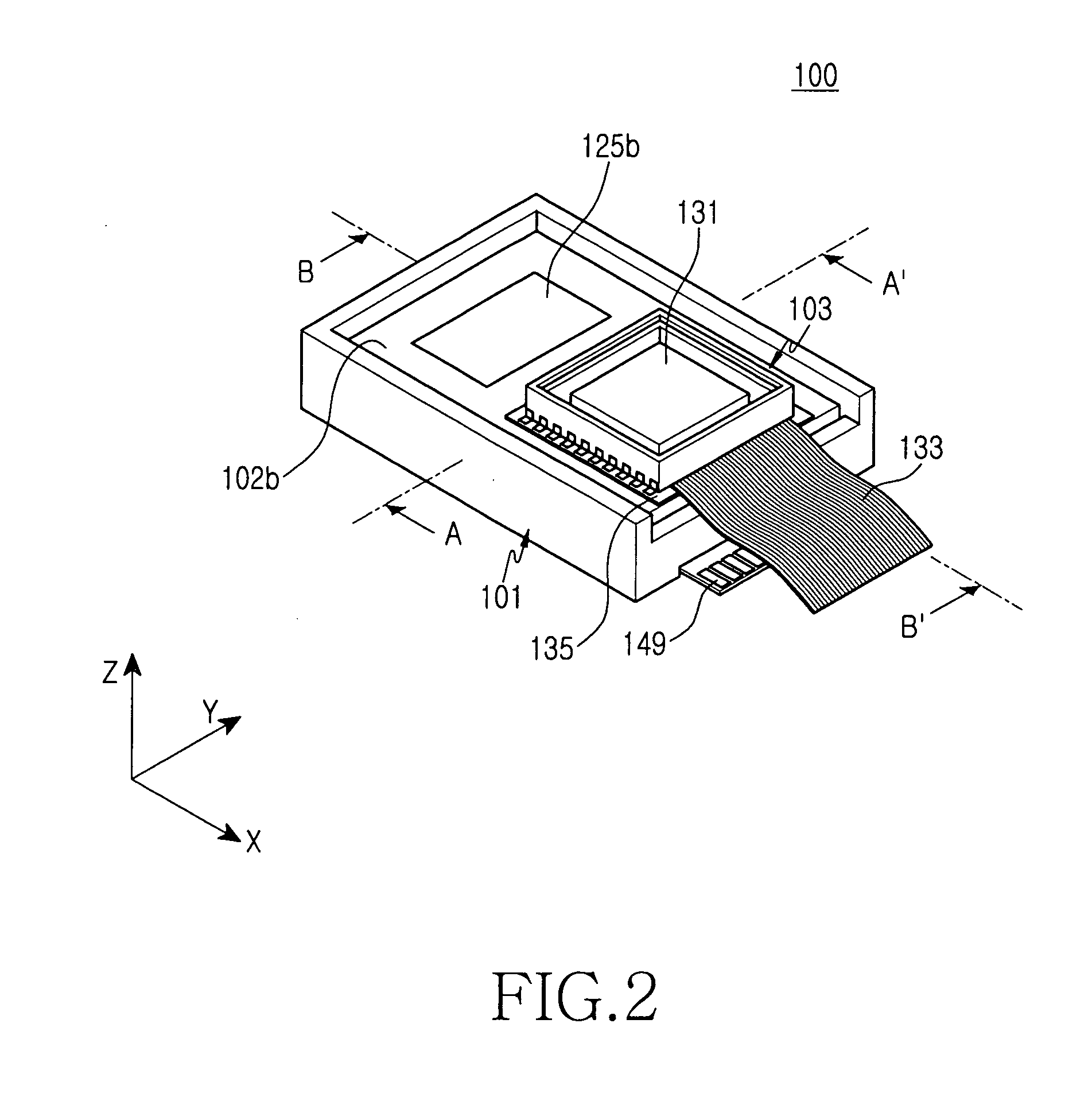Optical image stabilizer for camera lens assembly
a technology camera lens, which is applied in the field of optical image stabilization, can solve the problems of inconvenient assembly, inconvenient correction, and high camera efficiency, and achieve the effect of clear imag
- Summary
- Abstract
- Description
- Claims
- Application Information
AI Technical Summary
Benefits of technology
Problems solved by technology
Method used
Image
Examples
Embodiment Construction
[0029] Hereinafter, embodiments of the present invention will be described with reference to the accompanying drawings. For the purposes of clarity and simplicity, a detailed description of known functions and configurations incorporated herein is omitted to avoid making the subject matter of the present invention unclear.
[0030] As shown in FIGS. 1, 2, 5, and 6, an optical image stabilizer 100 of a camera lens assembly according to the first preferred embodiment of the present invention includes a main frame 101, a drive frame 102, coils 143, and permanent magnets 125a. The optical image stabilizer 100 corrects image blurring arising from a hand-shake, by moving the drive frame 102 on the main frame 101 using interactions between the coils 143 and the permanent magnets 125a, thereby changing the position of a camera device 103.
[0031] A portion of the upper surface of the main frame 101 is opened so that a subject image can be introduced into a camera device 103. First slide recess...
PUM
 Login to View More
Login to View More Abstract
Description
Claims
Application Information
 Login to View More
Login to View More - Generate Ideas
- Intellectual Property
- Life Sciences
- Materials
- Tech Scout
- Unparalleled Data Quality
- Higher Quality Content
- 60% Fewer Hallucinations
Browse by: Latest US Patents, China's latest patents, Technical Efficacy Thesaurus, Application Domain, Technology Topic, Popular Technical Reports.
© 2025 PatSnap. All rights reserved.Legal|Privacy policy|Modern Slavery Act Transparency Statement|Sitemap|About US| Contact US: help@patsnap.com



